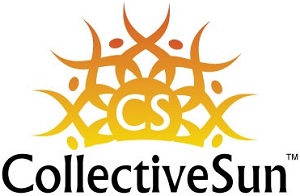 Special to the Philanthropy Journal
Special to the Philanthropy Journal
By Allie English
Every nonprofit has a mission, a driving force that directs and inspires the organization. Whether it’s feeding the homeless, raising funds for cancer research, rescuing animals from abuse and neglect, or providing clean water to people in impoverished countries around the world, the people who operate and volunteer for nonprofits are passionate about their cause.
 Donors who financially support nonprofits tend to be those who connect with the vision of the organization and have a passion for its mission. They willingly donate their money because they care about the cause. While nonprofits love their supporters, it can be all too easy for a charity to fall into a cycle of marketing in which they continually reach out to a static donor base, sending newsletters and e-blasts to a never-changing list month after month.
Donors who financially support nonprofits tend to be those who connect with the vision of the organization and have a passion for its mission. They willingly donate their money because they care about the cause. While nonprofits love their supporters, it can be all too easy for a charity to fall into a cycle of marketing in which they continually reach out to a static donor base, sending newsletters and e-blasts to a never-changing list month after month.
Continually relying on the same supporters can be problematic for any nonprofit, for several reasons. People’s finances change, and while faithful donors are enthusiastic about the causes they support, the average contributor does not have unlimited funds to dedicate to his or her favorite charity. Since most nonprofits already operate on a limited budget, relying on the continued support of the same donors is a dangerous tactic and one that is unlikely to lead to budget growth or increased effectiveness. Since a sudden change in giving from even a single faithful donor can wreak havoc on the finances of a nonprofit, an ever-expanding donor base is crucial to a charity’s success in accomplishing its mission.
However, growing and diversifying your donor base can be difficult to achieve while maintaining daily operations and can feel like an insurmountable struggle for many organizations already operating on a shoestring budget. Nonprofits don’t always have the time or resources to devote to massive mail-outs, expensive email clients, or state-of-the-art ad campaigns.
One of the ways a nonprofit can break free from donor burnout and grow its base of supporters is by expanding the vision of the organization to include a complementary mission. While they may each have a different mission statement and central cause, all nonprofits and charitable organizations want to do good and help others. In a world afflicted by poverty, hunger, illness, political unrest, and seemingly countless social issues, a charitable organization can more effectively do good for others, and simultaneously benefit itself, by embracing more than one primary objective. This might mean creatively partnering with other organizations, hiring employees from the communities or populations the nonprofit serves, or making changes to the organization’s practices and culture.
 One example of a cause which can easily complement the mission of any nonprofit and help expand a static donor pool is environmental protection and preservation. This earth is the only home we’ve got, and protecting the planet means protecting those who live on it. A nonprofit, then, could easily pursue its main mission while also working to decrease pollution and protect the environment, and one of the ways a charity can embrace that complementary mission is by choosing to switch to solar energy.
One example of a cause which can easily complement the mission of any nonprofit and help expand a static donor pool is environmental protection and preservation. This earth is the only home we’ve got, and protecting the planet means protecting those who live on it. A nonprofit, then, could easily pursue its main mission while also working to decrease pollution and protect the environment, and one of the ways a charity can embrace that complementary mission is by choosing to switch to solar energy.
Solar energy has numerous benefits for the environment. Solar electrical systems are effective in reducing pollution because they use the power of the sun to replace a system that would otherwise be powered by coal-burning electrical plants. By switching to solar, nonprofits can help decrease human dependence on fossil fuels — a major cause of global warming. Solar energy is completely renewable and is the cleanest source of energy available domestically in America. It’s also reliable and secure because it uses energy from sunlight, which is always readily available.
However, nonprofits have traditionally faced several barriers when it comes to solar energy projects, such as difficulties with financing and locating quality installers. Because of their tax-exempt status, nonprofits are unable to take advantage of the solar tax credits given to for-profit companies. In addition to the financial burden placed on tax-exempt organizations wanting to fund solar projects, most don’t have the time, knowledge, or experience necessary to research and screen solar installation companies.
 A company called CollectiveSun is working to eliminate these hurdles and is helping nonprofits embrace the complementary mission of environmental protection. CollectiveSun is the only company in America that exclusively helps nonprofits and tax-exempt organizations fund solar projects nationwide. They have revolutionized funding for nonprofits and tax-exempt organizations wanting to go solar by providing a Solar Power Agreement (SPA). This proprietary financing method allows the nonprofit to utilize solar tax benefits that would otherwise be lost. CollectiveSun passes the savings onto the nonprofit in the form of a 15 percent reduction in the cost of a new solar panel system. The company also offers assistance and a variety of methods to help provide the upfront capital for its Solar Power Agreement, including a proprietary CrowdLending campaign.
A company called CollectiveSun is working to eliminate these hurdles and is helping nonprofits embrace the complementary mission of environmental protection. CollectiveSun is the only company in America that exclusively helps nonprofits and tax-exempt organizations fund solar projects nationwide. They have revolutionized funding for nonprofits and tax-exempt organizations wanting to go solar by providing a Solar Power Agreement (SPA). This proprietary financing method allows the nonprofit to utilize solar tax benefits that would otherwise be lost. CollectiveSun passes the savings onto the nonprofit in the form of a 15 percent reduction in the cost of a new solar panel system. The company also offers assistance and a variety of methods to help provide the upfront capital for its Solar Power Agreement, including a proprietary CrowdLending campaign.
This approach makes CollectiveSun unique in the field of clean energy and enables them to assist nonprofits by making the switch to solar easier and more affordable. Thanks to CollectiveSun’s recent partnership with EnergySage, the country’s largest online comparison-shopping marketplace for solar installers, affordable solar projects are now available to any nonprofit whose solar system is 50KW or larger. Incorporating environmental preservation into the vision of an organization and expanding the potential donor base of a nonprofit by funding a solar project is both simple and affordable with the help of CollectiveSun and EnergySage.
In the nonprofit world, there can often seem to be too many causes and not enough money to go around. Switching to solar energy is just one example of the countless creative ways nonprofits can expand beyond a single mission and grow and diversify their donor base to include those who are passionate about causes that may be different from the organization’s primary mission. Rather than staying single-minded for fear of mission-creep, nonprofits should consider incorporating complementary missions into the scope of their vision to not only revitalize their donor base, but also to solve more problems, help more people, do more good, and make the world an even better place.
Allie English is an author, speaker, and blogger who works as a writer for CollectiveSun. Having worked and volunteered for a number of 501c3 organizations, she has a broad understanding of the challenges facing charitable companies and is passionate about seeing nonprofits find ways to be both financially and environmentally responsible. Allie also has experience in education and currently works for a publishing company. Allie uses her writing to enthusiastically share the mission of CollectiveSun and promote the benefits of their services to the nonprofit community. Allie studied in France and holds bachelors degrees in both history and French from Union University where she graduated with honors. She is currently pursuing her MBA with a concentration in marketing.




